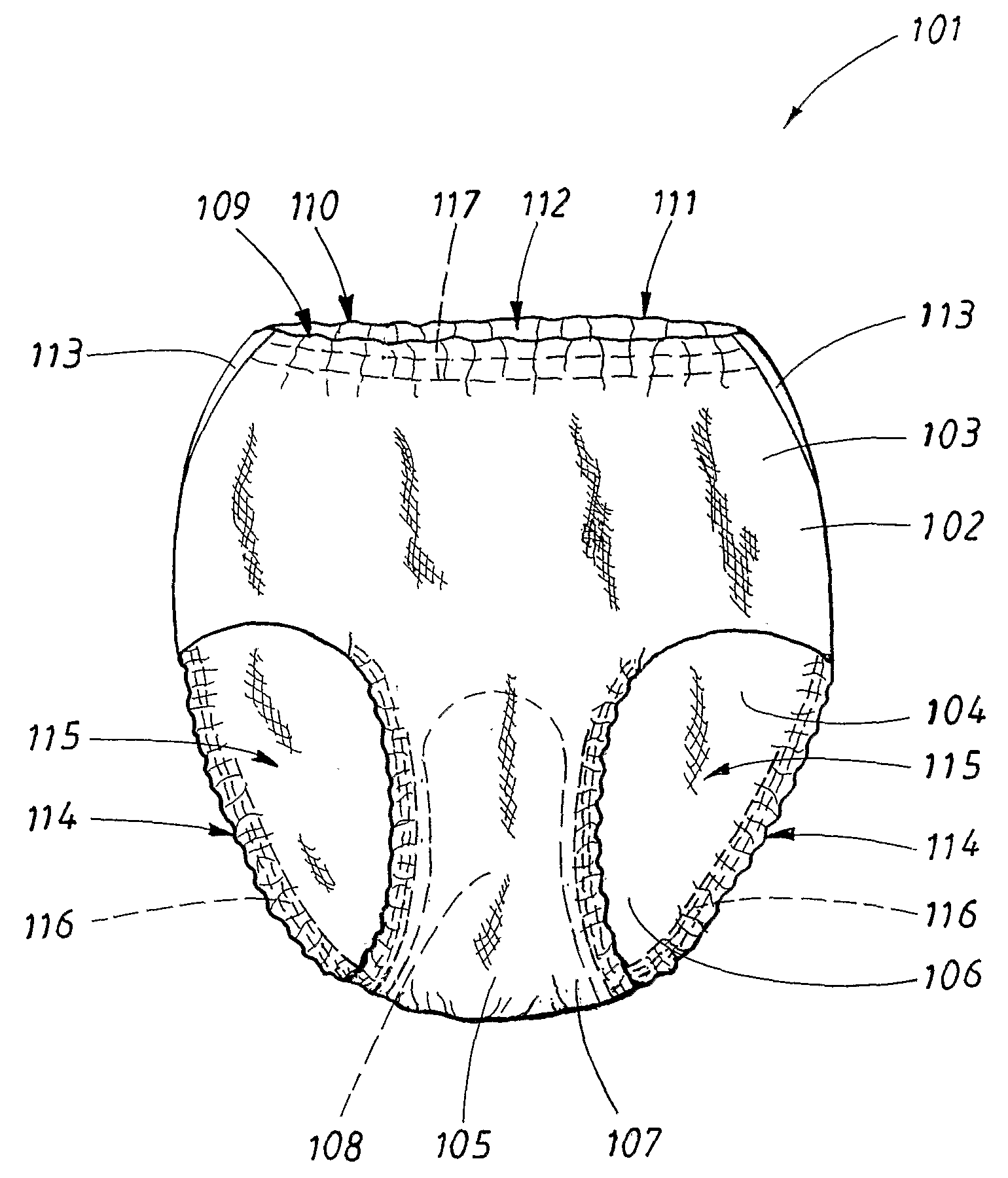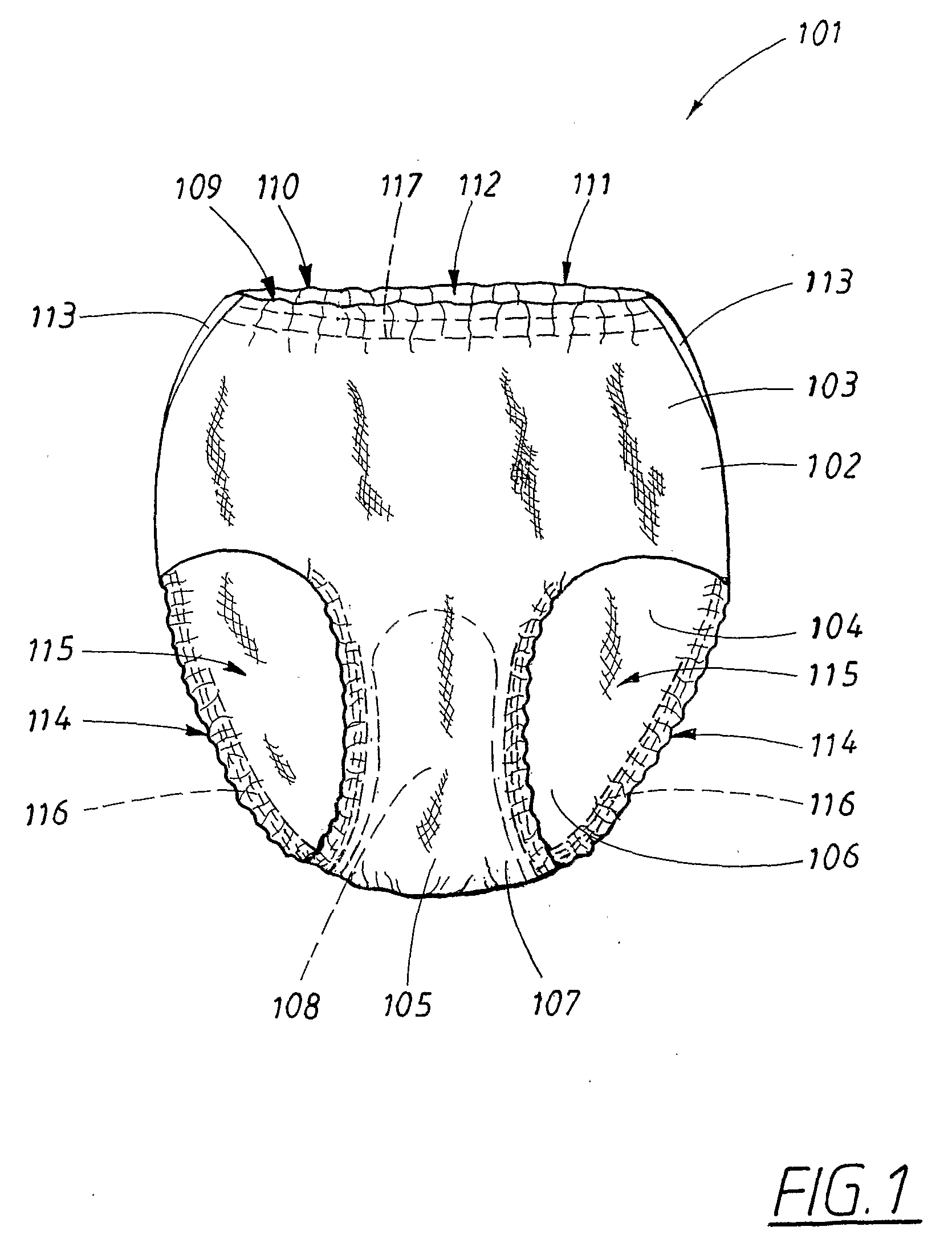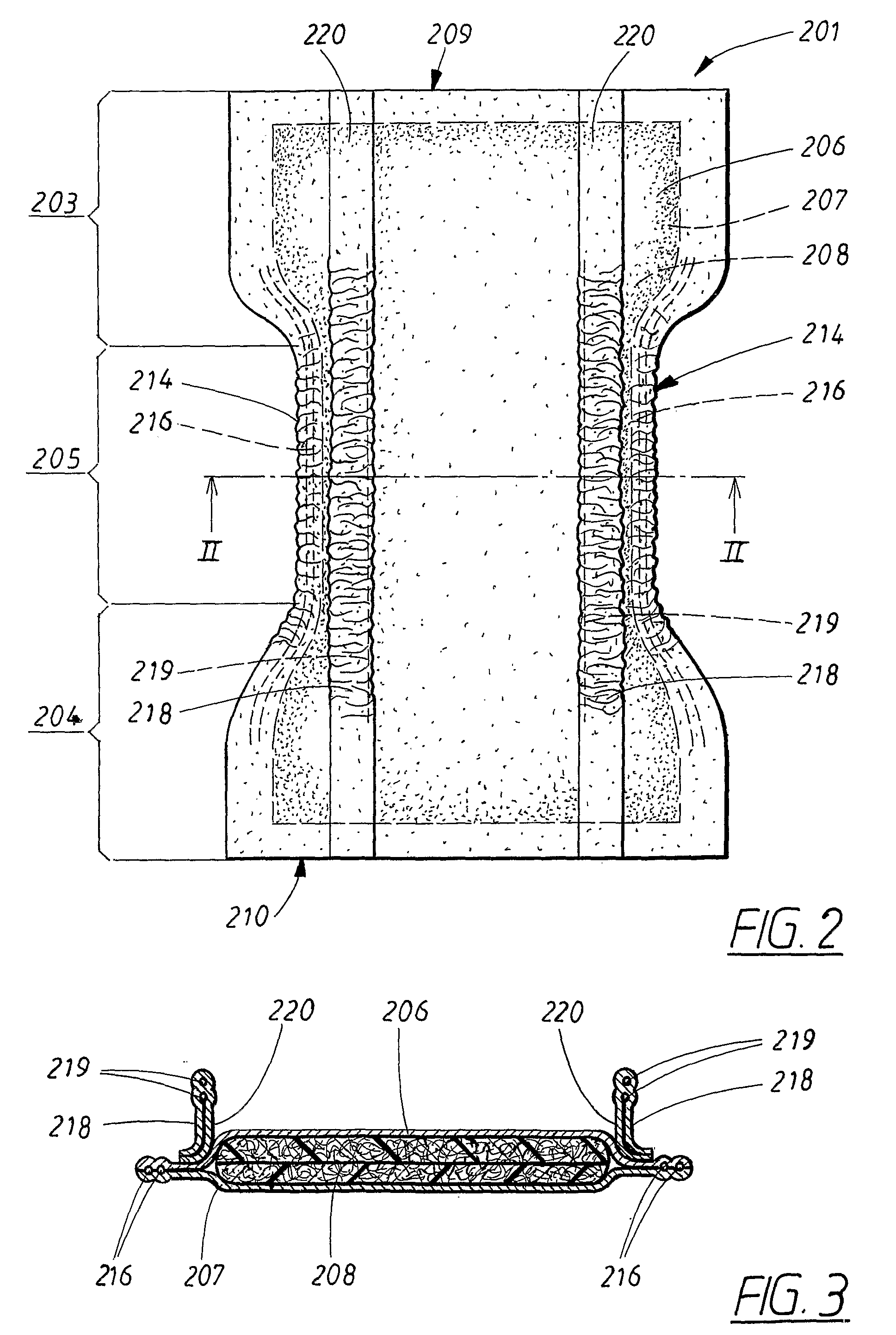Absorbent Article with Improved Elastic Means
a technology of absorbent articles and elastic means, applied in the field of absorbent articles, can solve the problems of chafing from the parts of absorbent articles that lie most tightly against the user's body, irritating adjacent skin surfaces, and affecting the effect of elasticity, so as to achieve the effect of high elasticity module, cost-effectiveness and cost-saving
- Summary
- Abstract
- Description
- Claims
- Application Information
AI Technical Summary
Benefits of technology
Problems solved by technology
Method used
Image
Examples
Embodiment Construction
[0013]An absorbent article of the type mentioned in the introduction, which essentially eliminates the problems that exist with previously known such absorbent articles, has been achieved with the present invention.
[0014]An article produced in accordance with the invention is chiefly characterised in that the skincare agent is arranged to be released when the elastic means is stretched during use of the absorbent article and in that the elastic means absorbs less than 20% water or urine.
[0015]Arranging skincare agent in the structure of the functional elastic means comprised in the absorbent article, which elastic means are characterised by, among other things, their ability to be stretched, facilitates the discharge of skincare agent out of the elastic means only when the absorbent article is used. In addition, the elastic means can be treated so that the skincare agent is not released until stretching or extension of the elastic means exceeds a certain threshold value. The convent...
PUM
 Login to View More
Login to View More Abstract
Description
Claims
Application Information
 Login to View More
Login to View More - R&D
- Intellectual Property
- Life Sciences
- Materials
- Tech Scout
- Unparalleled Data Quality
- Higher Quality Content
- 60% Fewer Hallucinations
Browse by: Latest US Patents, China's latest patents, Technical Efficacy Thesaurus, Application Domain, Technology Topic, Popular Technical Reports.
© 2025 PatSnap. All rights reserved.Legal|Privacy policy|Modern Slavery Act Transparency Statement|Sitemap|About US| Contact US: help@patsnap.com



